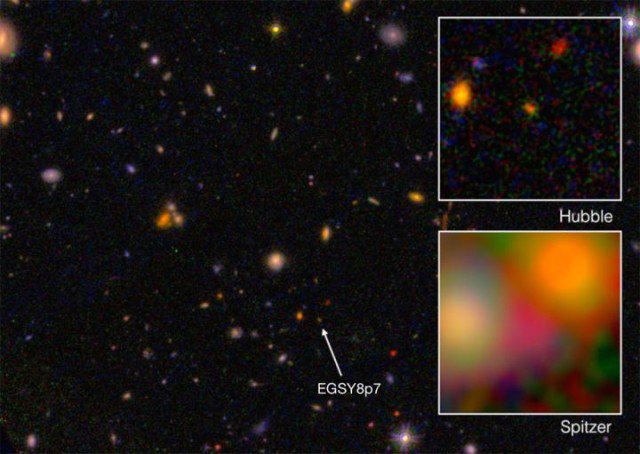-
Tips for becoming a good boxer - November 6, 2020
-
7 expert tips for making your hens night a memorable one - November 6, 2020
-
5 reasons to host your Christmas party on a cruise boat - November 6, 2020
-
What to do when you’re charged with a crime - November 6, 2020
-
Should you get one or multiple dogs? Here’s all you need to know - November 3, 2020
-
A Guide: How to Build Your Very Own Magic Mirror - February 14, 2019
-
Our Top Inspirational Baseball Stars - November 24, 2018
-
Five Tech Tools That Will Help You Turn Your Blog into a Business - November 24, 2018
-
How to Indulge on Vacation without Expanding Your Waist - November 9, 2018
-
5 Strategies for Businesses to Appeal to Today’s Increasingly Mobile-Crazed Customers - November 9, 2018
Ancient Galaxy aged 13.2 billion years hunted down by NASA Astronomers
This past week a team of researchers from the California Institute of Technology (Caltech) found the EGS8p7 galaxy and estimate that the distant space-neighborhood is 13.2 billion years old, putting its birth about 600,000 after the birth of the universe. In its first billion years after formation, the universe was a soup of charged particles and light packets (photons).
Advertisement
It was tagged as a candidate needing more investigation, after data was gathered by NASA’s Hubble Space Telescope and the Spitzer Space Telescope.
“We report the discovery of Lyman-alpha emission (Lyα) in the bright galaxy EGSY-2008532660 (hereafter EGSY8p7) using the Multi-Object Spectrometer For Infra-Red Exploration spectrograph at the Keck Observatory”, the researchers reported. The research paper informed, “Redshift results from the Doppler effect, the same phenomenon that causes the siren on a fire truck to drop in pitch as the truck passes”.
Redshift is commonly used to measure distance to galaxies. This particular galaxy raises some very interesting questions about the early universe.
Immediately after the Big Bang, the glowing plasma that composed the Universe recombined into atoms of neutral gas – mostly hydrogen and some helium. The early universe could not transmit light because the photons were scattered by free electrons. This sort of radiation was supposed to have been totally absorbed in the early days of the universe by clouds of neutral hydrogen. This galaxy is estimated to be around 13.8 billion years old and likely formed after the Big Bang – it is codenamed EGS8p7. Neutral gas remains ionized today in the universe. This is where the problem arises; these Lyman-alpha lines should have been absorbed by the hydrogen clouds present in the universe before galaxies reionized them.
And because of absorption, scientists say that, at least in theory, it should not have been possible at all to view the Lyman-alpha line from EGS8p7.
NASA Hubble post-doctoral scholar in astronomy Adi Zitrin admitted as much. It is this ionization that allows us to capture certain radiation spectrums from other galaxies, which then reveal how old they are. The galaxy was named EGS8p7 by Caltech scientists using the alphanumeric nomenclature system reserved for distant objects in space.
Advertisement
Talking about how the scientists dated the new galaxy, former Caltech professor Richard Ellis further explained things in the statement. It is corresponding to the period when the universe is going to get full by absorbing hydrogen clouds.




























